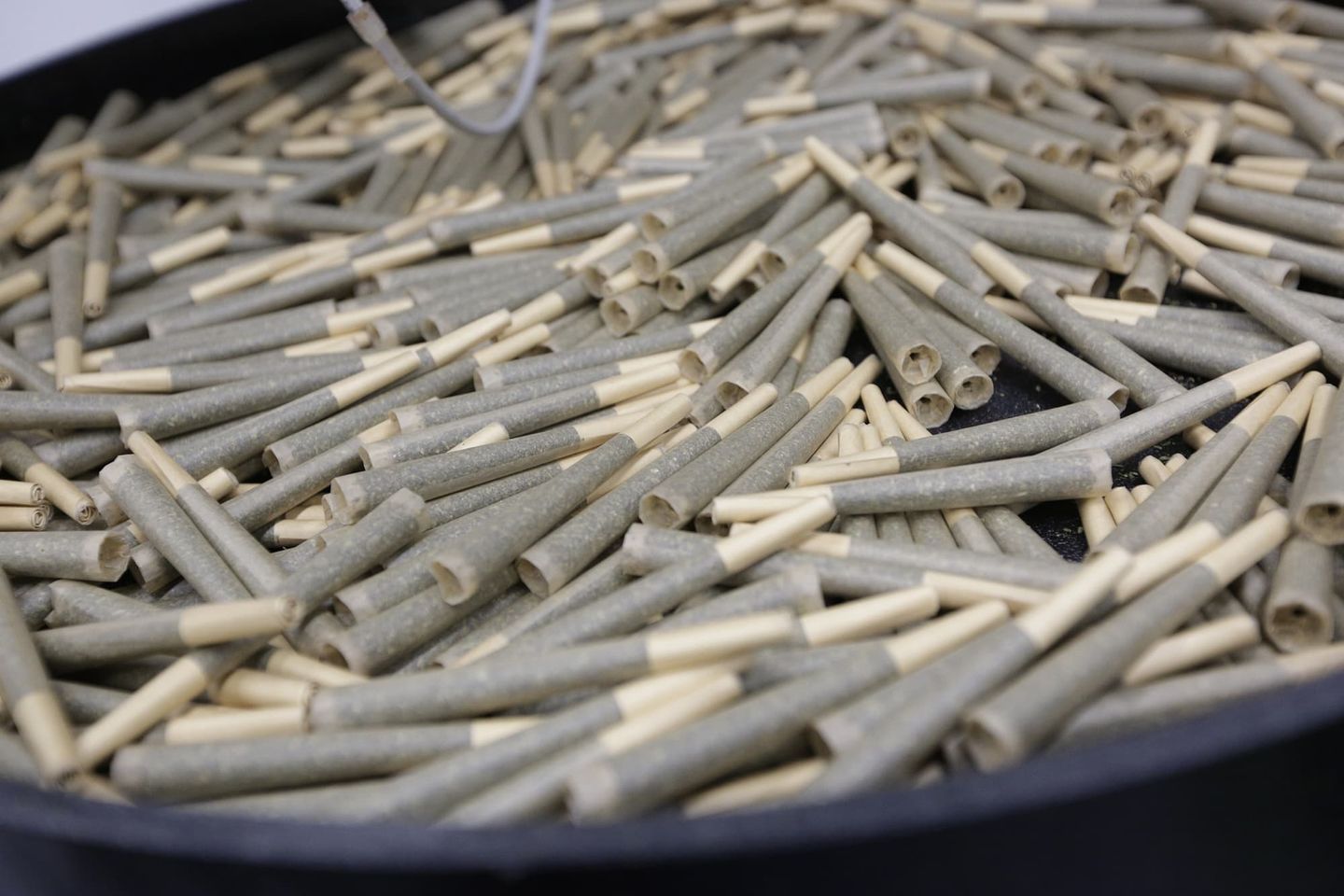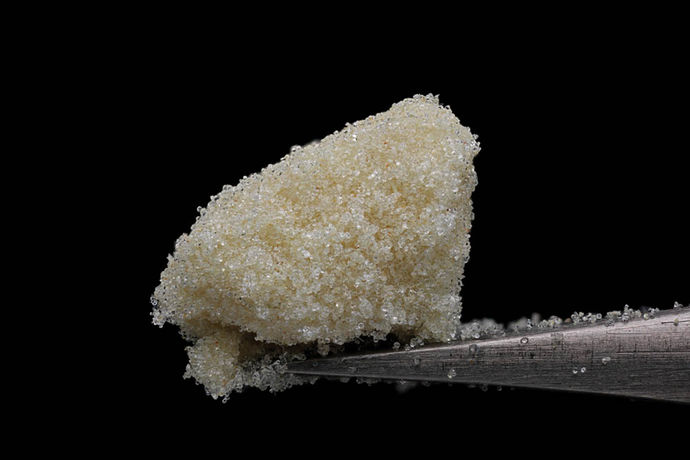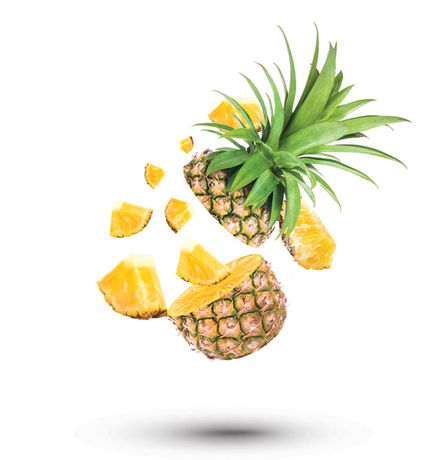For a technique that’s as old as time, the art of rolling the perfect joint has largely stayed an expression of personal ability, holding in place like an evolutionary oddity ripe for development.
As the remainder of the weed world has embraced technology to create ever better ways to get stoned, the closest thing that the joint has had to innovation were boxes that shake weed into a paper cone. That’s not exactly rocket science – nor the type of innovation that will blast you off like a rocket with a smoking experience.
The quest to improve the humble joint (specifically the infused joint) has been the Shangri-La for the company, which has spent the last seven years feverishly bringing joint-rolling into the 21st century.
Infused Futures
The first time I heard the term “pascal” was on the phone with the company’s founder and engineer, Mark Holderman, who explained that it’s a scientific way to articulate how well a joint or cigarette smokes based on the amount of air pressure required to hit it. In science jargon, it’s about the amount of draw resistance relative to gas phase pressure and flow velocity fields inside a burning joint – not exactly the terms most brands use when describing their products. These were concepts I’d never considered before, despite having smoked a great many joints in my career.
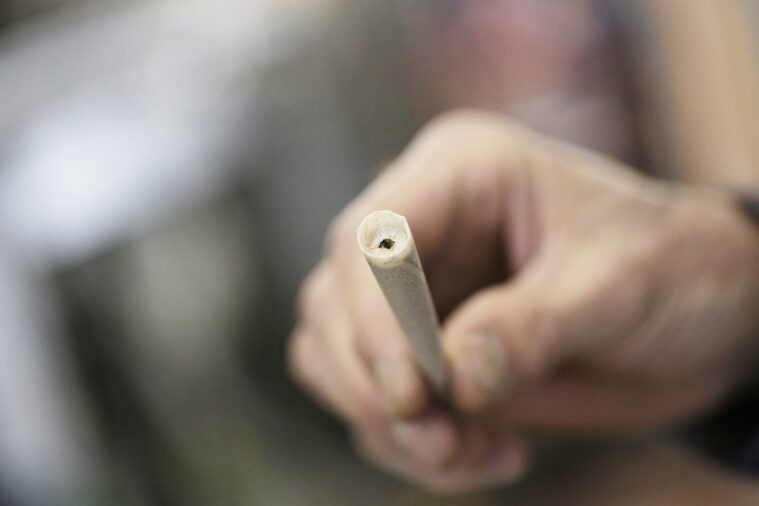
While my understanding of the science behind a joint was hazy, I had experienced a great many infused joints that didn’t smoke right – or at all – and ruined several pairs of shoes and jeans with oil dripping off a flaring joint, reminiscent of a sparkler on the Fourth of July. Most joints are “infused” by either rolling oil inside, or painting it on the outside – both of which cause inconsistent burns and are generally a waste of time and money. Offer an infused joint to a heady connoisseur and the look you’ll get will be less than stellar. The PICC platform wants to change that perception, one puff at a time.
Like many disruptive technologies, these innovations happening in Spokane, Washington are in a nondescript warehouse full of dedicated engineers. The day I took a tour, an older gentleman accidentally poked his head inside and asked where the paddle board manufacturer was, while giving a wild-eyed look to the machine the size of a car whirring with activity and filling bins with joints. The terps in the air could have told any stoner that this was not the type of “resin” to make a water sports toy, but we laughed that nothing goes together quite as well as a joint and a paddle.
Standing inside the facility feels like a machine shop, which it has been for the better part of a decade. To build the iterations of the machine required advanced CAD designs from scratch, designing virtually before computer-controlled CNC machines manufactured each part, often repeating the same process over and over until the function of a specific part was perfected. With thousands of moving pieces, everything has to work in unison, with a custom software to run it.
“When people hear that this project has taken seven years, we often laugh that it must have been a really good joint to last this long,” Holderman said with a grin. “It really comes down to our team and the dedication to development, and not being satisfied until the process is truly perfect to release it to the world.”
Combining Science with Weed
The most unique factor in the PICC platform is how the joints are filled with flower and oil. Once the moisture content has been measured and the flower ground to the corresponding consistency, compressed air layers the bud in bursts – creating a perfect density as the bud stacks up in the joint.
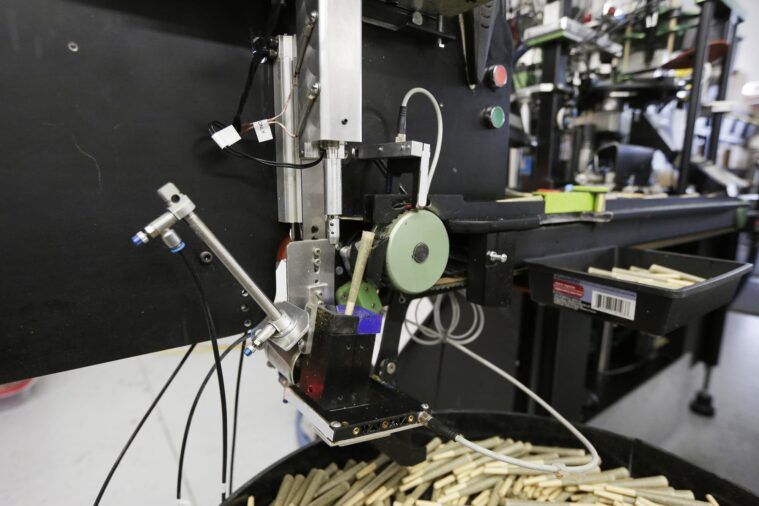
When the joint reaches capacity (measured by both a scale and a laser), the machine gives the flower a gentle final compression before folding a patented joint tip that looks like origami, with a perfect hole in the center. This is where the concentrate will enter (through a hollow metal tube that goes to a premeasured point), filling the core with concentrate as it exits, leaving a perfect center of oil inside a layered joint.
Where this process makes the biggest difference is in how the joint smokes and vaporizes. While flower is something that is “smoked” by burning, it’s not how you want to consume concentrates. That’s why concentrates are vaped, and the construction of the PICC joints causes the oil and terpenes to vaporize at ideal temperatures as the flower around it burns – delivering clean hits without flares or runs in the joint. This also allows for efficient consumption of the oil, vaporizing the entire core, which gets the user stoned without waste or ruined jeans. And it all starts with the origami fold, which is designed to light easily and quickly, preparing the joint for inhalation in a consistent fashion.
“It’s not enough to have a good joint 98% of the time,” Holderman explained seriously. “We want to have a perfect joint every single time, with the level of consistency that you would expect from a cigarette company.”
The amount of science controlling each step in the machinery process is intense, which is why the project has taken up seven years of time, and holds over 89 unique patent claims. Each piece in the process has to function perfectly: weighing out the flower, the joint itself, trimming and clipping it, infusing the oil. This results in a completely uniform final product.
Surfaces are kept cool, even as the machine runs, to avoid resin buildup – and core parts swap out mechanically to be cleaned automatically as freshly-cleaned pieces jump in. The slightest disruption in air pressure or air bubbles within the infusion system could cause chaos, leading to inconsistency in the amount of oil, which is where the software and firmware controls continue to ensure perfection. Each part of the machine is designed in “cassettes” that can be removed, fixed or updated, with scalability being key to the process.
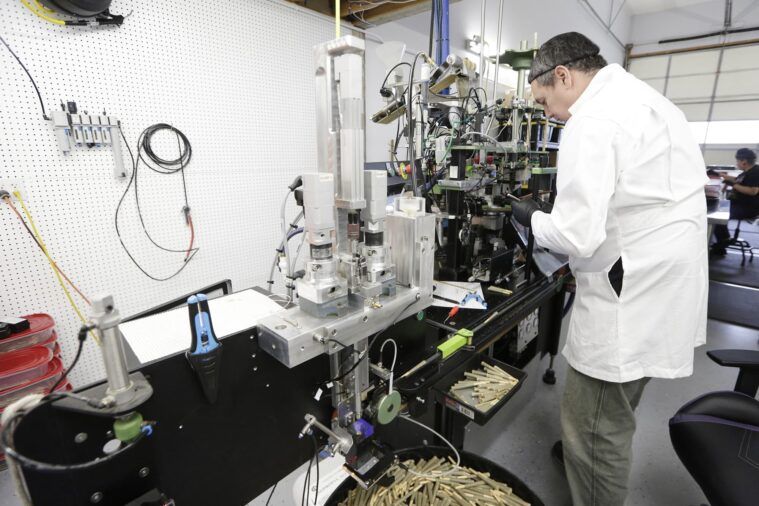
When the machines are fully running, the only human element is filling the receivers with ground flower or concentrate, which will eventually be done with robot arms. While the goal isn’t to remove humans from the symbiotic growing process of Cannabis, the PICC platform certainly wants to remove human error from the rolling process – the same way that food or pharmaceuticals are manufactured with limited human touches for both safety and efficiency.
Lifting the industry
Perhaps the most inspiring part of the PICC platform is the desire to work with Cannabis farms and processors, instead of competing with them.
Instead of building these machines to sell, or to roll their own farm’s weed, the vision behind the platform is to bring craft farms and processors together – blending buds and oil to deliver unique joints to the Washington weed market. This approach will allow farms to send their best indoor or sungrown flower to be paired with concentrates, creating huge collaborative opportunities that will help many farms sell more products.
It will also remove the need for companies to try and roll their own infused joints – a strategy typically not cost effective or good for the consumer. By joining forces with the industry, the PICC platform stands to help farms and consumers alike, uniting the industry like a stoner circle passing a joint. This is the motivation behind the machines, which are debuting here in Washington, but being developed to scale all over the country.
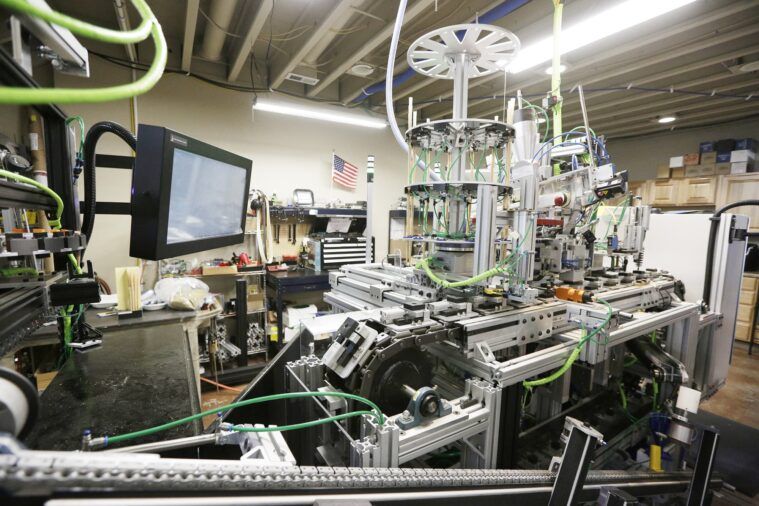
“We want consumers and farms to ask for joints powered by the PICC platform as the standard for joints, and to look for our brands that are in collaboration with farms,” Holderman explained. “Laff Gas will be our affordable but powerful line, Liv Templ for CBD or other cannabinoid infusions that are less intoxicating, and the premium lineup of Studio joints – which will have QR codes to link to the growers in each collaboration.”
As the first state to legalize Cannabis along with Colorado, it seems fitting that Washington will be the home of the first disruptive technology to hit the joint world since the Knockbox, delivering new tech that connects farms to consumers with each toke.

